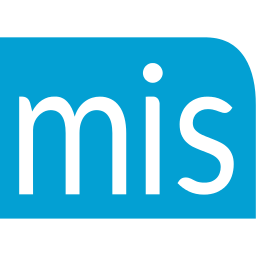 Not all sales close on the first – or even second or third, etc. – closing call. Because of that, it’s often necessary to set a call back to continue the conversation. Like most parts of a sale, the call back is one of those recurring situations that you, or your sales team, will find yourself in countless times a day or week.
Not all sales close on the first – or even second or third, etc. – closing call. Because of that, it’s often necessary to set a call back to continue the conversation. Like most parts of a sale, the call back is one of those recurring situations that you, or your sales team, will find yourself in countless times a day or week.
Because of this, it’s important that you develop and then script out a best practice approach to handle it effectively. Unfortunately, many sales reps have never given the call back (or very many other parts of their sale) much thought. Instead, they adlib it and so develop ineffective and bad habits.
Some of these include:
“Ah, when should I follow up with you?”
This is obviously a weak set up and gives all control of the call – and the ensuing sales cycle – over to the prospect. As strange as it may sound, this is how over 50% of sales reps handle the call back.
Another ineffective approach:
“When will you be speaking with ________? O.K., would it be alright if I followed up after that?”
Again, this is a weak approach and gives all control to the prospect.
While there are some instances when you need to find out what the next step is, (i.e. talking to a partner, meeting with a committee, etc.), what’s important is that you, the sales rep, take control of the call back timeframe AND get commitment from your prospect.
Here are some examples of the proper way to set a call back:
“__________, in terms of talking to your partner, what time today can you do that?”
Sometimes it’s better to assume they can and will be speaking with the other person that same day. This works best in a small company or in a business to consumer sale. If you know it’s going to be later in the week or another time, then change the script accordingly. Try:
“__________, when is the soonest you’ll be speaking with them?”
By doing it the first way, you’ll either be setting or confirming the time frame and controlling the call back. If they can’t do it that day, then they’ll come back with a more definite day and time and that will keep you in tighter control of the sales cycle. After they let you know, say:
“O.K., great. I’m looking at my calendar for that day – what’s better for you on that Tuesday – morning or afternoon?”
Now you’re locking down not only the day, but also the time. You’re getting them involved and having them check their schedule. Once again, YOU are controlling the call back, and by doing it this way you’re not letting a lot of time pass between when they speak to their partner and when you next speak again.
If there are a lot of decision makers involved, or if it’s going to be a longer process, then you should schedule a “progress call” to access their level of interest and to keep yourself in the loop.
Try:
“I understand you’ve got several people involved in this and that you’re talking to other vendors. Here’s what I’d suggest: since you’re likely to have some questions come up between our next call, how about I reach out to you in (one week; two weeks, whatever is appropriate) just to see if there is anything I can answer for you.
“I’ve got my calendar in front of me – how does (suggest a day and time) look for you?”
Once again, you are driving the sales cycle and the call back. This is crucial to keep you top of mind and to allow you to head off any problems that might come up during the decision process.
And another:
“I’ll go ahead and send you the information we just talked about, and then I’ll schedule you for a call back next Tuesday. Do you have your calendar handy?”
Noticing a trend? Once again, I’m in control of the call back time frame. And don’t worry – if that’s not O.K. with them, they’ll suggest another day/time that is. Setting a call back like this keeps the sale moving forward and keeps them from “falling through the cracks.”
Now what happens if they want to call you back and won’t allow you to set the call back? Two things: One is that this isn’t a good sign. It means they want to control the sales cycle (which is never good), and, number two, it can also mean there is an objection that is standing in the way of the sale.
When this happens, you should try to move the call back date out just a little further and still try to control when you get to call back. Try:
“I understand. What’s the timeline for this?”
Qualify for timeline first. Then:
“Tell you what: If I don’t hear from you in the next (30 days – whatever is appropriate), then I’ll get in touch with you to see if there are any questions. What do you prefer, mornings or afternoons?”
Once again, you’re in control of the call back, and you’ve got a definite time frame and time of day to call back.
The bottom line with the call back call is to keep control of when it happens. Never leave it up to your prospect. Try to lock down the soonest date after any “event” that is going to happen, like them speaking to a partner, etc. Next, get them involved by having them check their calendar and identify a time of day. Try to get their buy in on that day.
By getting better at directing the sales cycle, you’ll get closer to making deals happen. Make it a point to get good at this – and all other – parts of the sale. As you do, you’ll move closer to becoming a top producer in your company and then in your industry.
